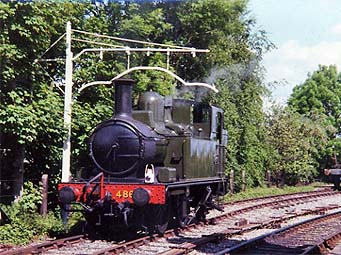Hello,
I'm having trouble understanding what loading gauge means and how it works. I've read a couple of websites on it and looked at a railway book of mine that discusses it as clearances, and it's clear to me that I need it sadly dumbed down to the simplest explanation.
Lets look at this from the Operations side of Freight loading (short basic versions).
Don't let all the different Gauges confuse you. Basically, unless you are talking about Containers (ISO/Swapbodies) there is only one gauge.
W6A gives you the maximum width at heights above rail level that can be loaded on a wagon.
This is dependent on the wheelbase/bogie centres of the wagon being loaded, so is split into different ranges.
(The further apart the WB/BC, the more centre throw there is on curves, so width has to be decreased).
This gauge also covers loads longer than the wagon using under runners. The length of the load is limited because it is subject to end throw on curves and width decreases as length increases.
This gauge is rather basic in some ways but is for everyday use by competent operations staff. Only one maximum width is given for the whole length of wagon even though centre throw differs along the length. This can be calculated, and the wagon designed to take advantage of this. So using W6A a wagon may appear to be out of gauge.
It may be possible to load in excess of W6A, Exceptional Load. This requires authority from Network Rail with a RT3973EXL. Written authority giving maximum dimensions and any conditions of travel. Details of the load, wagon and route are submitted to the NR Gauging Engineer for comparison with actual structures. Speed limits may be imposed at certain locations or even not passing other trains at certain locations.
Simple way to look at it, between actual wagon/load, there is a safety envelope between structures and other trains so there is no contact.
There are very few areas of NR not cleared for W6A, Thameslink core being one.
W7 - W12 are only for load units (ISO containers and Swapbodies).
This has developed over the years as first the standard height has increased, then the width with swapbodies.
These gauges are not higher than W6A, but where the top is a curve, what are sometimes referred to as "ears" have been cleared to allow bigger boxes.
Low floor wagons have also been used to load bigger boxes, but operationally, gauge enhancement where possible to W10/12 is best.



